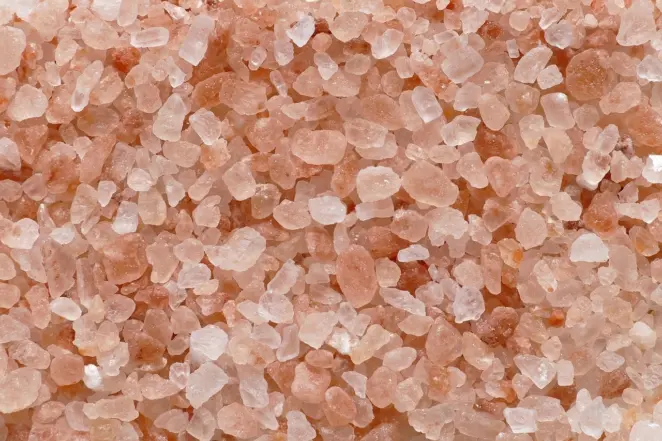What Is Pink Salt? Does It Have any Benefits?
Himalayan salt, often called pink salt, has grown in popularity in recent years.
People use it for everything from cooking to more creative applications, like lamps that brighten up a living room, but what exactly is pink salt? Where does it come from, and are the claims about its health benefits true?
On average, it can cost up to 30 times more than regular table salt, so is it really worth the price?
What Makes Pink Salt Pink?
Despite the name, pink Himalayan salt is more commonly sourced from mines in Pakistan, although some mines do exist in other Himalayan regions. The main source is the Khewra Salt Mine, the second largest salt mine in the world, located about 300 miles away from the Himalayas. It contains more than 25 miles of tunnels, a mosque built entirely from salt, and it is even open for visitors to explore.
The salt’s famous pink colour comes from natural minerals. The main one is iron oxide, also known as rust. Different amounts of these trace minerals give the salt crystals slightly different shades of pink, meaning no additives are used to give it its flamboyant colour. It is mined straight from underground and then processed to make it safe to eat.


Pink Salt Uses
You are likely to have seen pink salt in two main forms.
The first one is the edible pink rock salt – which is becoming increasingly popular in kitchens and restaurants all around the world.
The second form is a bit more unusual – pink salt lamps… That’s right: large chunks of salt are hollowed at the bottom to allow space for a bulb and wiring to fit. This process creates a salt lamp that uses its pink hue to give a relaxing atmosphere in your home due to the warm, soft glow it provides when turned on.
Many people who use salt lamps believe they can purify the air, reduce allergens, help you sleep better, improve your mood, and offer various other medical benefits.
Pink Himalayan salt is also found in some skincare products. It works as a natural exfoliator, helping to remove dead skin cells and leave skin feeling smoother. That said, other types of salt can be used in the same way.
Does Pink Salt Have Benefits?
You may have heard about the many supposed benefits of Himalayan salt for the body. The question is, how many of these claims are true, and how many are just myths used to sell more salt?
Let’s look at some of the most common claims and what the evidence really says:
- Pink Salt lamps improve air quality: One of the claimed benefits of lamps is that it 'improves air quality' by acting like a natural filter. However, studies show no scientific evidence to support this.
- Pink salt lamps improve your mood: Research carried out by the U.S. National Institute of Health found no consistent link between air ionization and changes in mood, sleep, or relaxation. While more studies could be done, it is safe to assume that pink salt has no clear benefit to your mood.


- Edible pink salt has health benefits due to the trace minerals: Pink Himalayan salt does contain more trace minerals, but it’s still about 98% sodium chloride. According to the NHS, an adult should not eat more than 6 grams of salt per day, so the amount of mineral content ingested is too small to make a noticeable difference to your health.
- Pink salt aids hydration: According to Medical News Today, it is true that salt can help balance fluid retention and prevent dehydration. However, this applies to all types of salt.
- Pink salt tastes different: Some people say Himalayan salt has a slightly sweet or earthy flavour. Others think it tastes saltier than regular salt. Because of this, some people might use less of it, which could help reduce their daily salt intake. However, studies show that the small amount of trace minerals in pink Himalayan salt doesn’t really change its flavour much.
While pink Himalayan salt looks beautiful and can add a touch of luxury to your home or kitchen, the truth is that most of the health claims around it aren’t supported by science. Its mineral content is too small to make a real difference when ingested, and salt lamps don’t purify the air or improve mood in any proven way.
In the end, pink salt is more about appearance and personal preference than health benefits. If you enjoy its look or flavour, there’s no harm in using it - just know that you’re paying a bit extra for its colour and charm, not for any special health advantages.


